Written by: TechFlow
The market is undergoing post-crash reconstruction after the 10.11 plunge, but many have noticed an interesting contrast.
Analysis blogger @0xyukiyuki posted:
One benefit of high volatility is that, regardless of direction, DeFi can achieve some impressive extra APR. Shadow Exchange in the Sonic ecosystem is a great example. Due to the surge in trading volume, their weekly rewards doubled last week.

Upon further investigation, we found that on October 11, amid intense price fluctuations, the $S / $USDC liquidity pool of Sonic ecosystem’s leading DEX, Shadow Exchange, reached an APR of 43,562%, with a 24-hour trading volume exceeding $12.8 million and rewards surpassing $45,000.
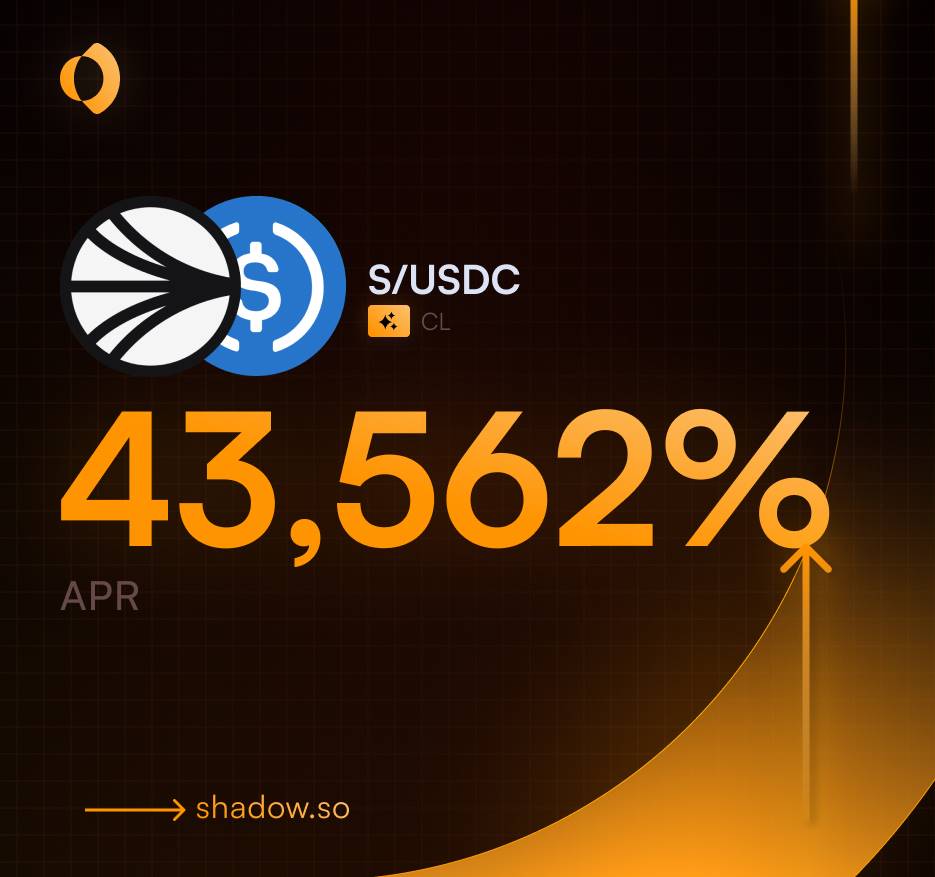
Amid the crash, Shadow’s income increased, rewards for ecosystem participants also rose, and the enthusiasm of all parties within the ecosystem was further heightened.
Such data inevitably arouses curiosity.
The crypto market believes that "crisis is opportunity." As DEX competition remains fierce and on-chain attention is being siphoned by Hyperliquid, Shadow Exchange, as the DeFi project with the highest trading volume and income in the Sonic ecosystem, easily showcased its core competitive advantages during a market crash:
With the x(3,3) model as its core innovation, Shadow Exchange is not just a robust and efficient trading platform, but is also building a powerful DeFi ecosystem centered on liquidity incentives, with self-driven and self-evolving capabilities.
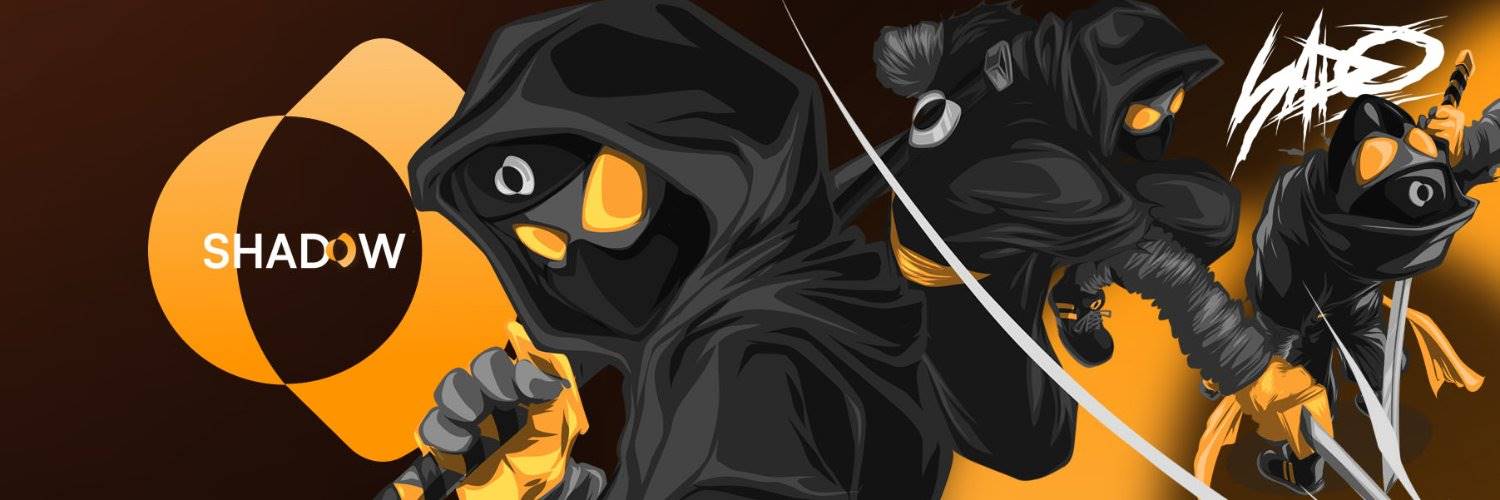
High APR Analysis: Shadow’s Comprehensive Ecosystem Value Capture and Feedback
Shadow Exchange is built with the core goal of "maximizing LP protection + superior fee capture," creating a highly efficient and resilient liquidity infrastructure.
Unlike the static model of traditional DEXs, Shadow Exchange emphasizes proactive intervention and value cycling, ensuring LPs can achieve sustainable returns in any market environment.
Let’s take the $S / $USDC liquidity pool as an example to break down how Shadow Exchange’s multi-layered incentive design transforms single liquidity contributions into a compound growth engine behind the high APR:
First, 100% of the trading fees from the liquidity pool are used to feed back into the ecosystem, forming the foundation of returns. Notably, Shadow supports two liquidity frameworks: a traditional liquidity framework and a concentrated liquidity framework. Under the concentrated liquidity framework, LPs can deploy funds precisely within specific price ranges for "targeted sniping," significantly improving capital efficiency and multiplying fee generation, thus bringing higher returns to LPs. Of course, higher efficiency often comes with higher risk, so LPs need to closely monitor impermanent loss and use Shadow’s dynamic fee adjustment mechanism to buffer potential shocks.
Token rewards from the Sonic ecosystem’s $S also provide a higher yield base for Shadow. Sonic Labs allocates $S token rewards weekly to quality projects within the ecosystem. As the undisputed leading DeFi in the Sonic ecosystem, Shadow’s pools with higher liquidity receive more generous incentives, further boosting LP returns.
Additionally, $SHADOW token rewards from Shadow Exchange itself reflect the protocol’s endogenous incentive resilience. Shadow Exchange dynamically adjusts $SHADOW token emissions based on protocol income for each epoch, ensuring rewards are linked to ecosystem health.
Meanwhile, integration with various DeFi products further opens up leverage amplification channels for Shadow, such as using lending protocols to loop principal and achieve higher returns with lower initial costs.
This comprehensive, all-encompassing ecosystem value capture and feedback benefits from the underlying advantages of the Sonic ecosystem, as well as Shadow Exchange’s own deep understanding of DeFi, embodied in the x(3,3) model. This model, evolved from the ve(3,3) model, integrates three-token design, PVP Rebase, auto-compounding, and other advantages, driving Shadow Exchange to further become the core engine of liquidity returns in the Sonic ecosystem.

Sonic Lays the Foundation, x(3,3) Innovation: Co-building the Shadow Liquidity Incentive Flywheel
Shadow Exchange is built on the Sonic blockchain, meticulously developed by Andre Cronje. Sonic not only inherits Fantom’s high-performance genes but also becomes a powerful accelerator for Shadow Exchange’s development through a series of cutting-edge innovations.
On one hand, Sonic’s comprehensive performance improvements enable Shadow Exchange to better support high-frequency DeFi scenarios. Through innovations such as SonicVM, SonicDB, Sonic Gateway, and SonicCS 2.0, Sonic achieves over 2,000 TPS throughput, 0.7-second transaction finality, and ultra-low transaction costs as low as $0.0001 per transaction, all while being fully EVM-compatible. This empowers Shadow to provide users with efficient, secure, convenient, and low-cost asset trading experiences.
When the 10.11 crash hit, Sonic and Shadow together withstood the test of a highly volatile market: while other networks crashed due to congestion and failed transactions, Sonic maintained full functionality with zero downtime. The combination of Sonic’s robust infrastructure and Shadow’s efficiency further ensures users earn more liquidity returns with lower risk.
On the other hand, Sonic’s FeeM model injects sustainable economic incentives into Shadow Exchange. The FeeM model allows up to 90% of on-chain fees to be directly fed back to developers and ecosystem applications, aiming to further reward high-traffic projects and attract innovative developers to build on Sonic.
As the leading DeFi in the ecosystem, Shadow Exchange receives a 90% fee rebate, all of which is used to reward traders. This allows users to maximize returns in a stress-free environment, whether for position adjustments or arbitrage strategies, thereby driving overall trading volume growth.
Additionally, the ecosystem application rewards from Sonic Labs further boost Shadow Exchange’s development. Sonic Labs distributes $S tokens as incentives based on key metrics such as trading volume and user numbers. This is not only a short-term traffic subsidy but also the cornerstone of long-term ecosystem governance. As the leading DeFi project in the Sonic ecosystem, Shadow receives a large amount of $S token rewards, which are then redistributed to users, achieving sustained growth.
Another easily overlooked point is that, whether it’s Andre Cronje’s renewed involvement or the continuation of Fantom’s strengths, Sonic undoubtedly possesses strong DeFi genes. With various DeFi infrastructure and innovative projects flourishing within the ecosystem, Shadow’s deep integration with the Sonic DeFi network will bring users a richer trading experience.
For more technical details and reward mechanism introductions about Sonic, interested readers can refer to our previously published in-depth article: " New Soup, New Medicine: How Is the Reconstructed Sonic Developing Now? "
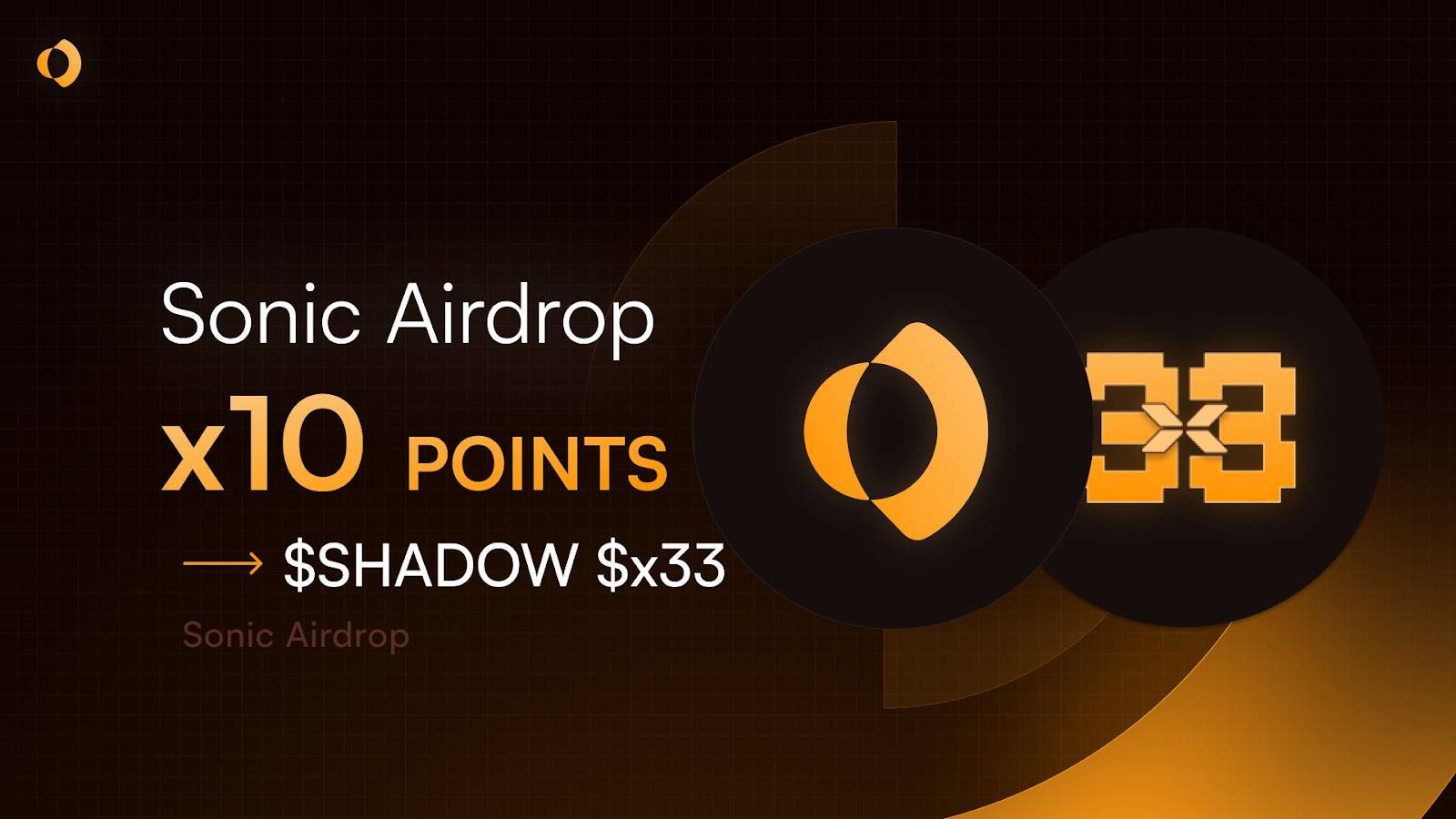
Beyond the series of advantages brought by building on Sonic, the x(3,3) model as a core innovation is also a crucial part of Shadow Exchange’s "comprehensive, all-encompassing ecosystem value capture and feedback."
As a trading platform, it must balance the interests of three core roles: low-cost execution and incentives for traders, risk buffering and high returns for LPs, and governance rights and long-term appreciation for token holders, thus building a self-reinforcing ecosystem.
The x(3,3) model creates a tightly connected "incentive chain" through three tokens, achieving a positive cycle from value creation, capture, distribution, to feedback for participants.
$SHADOW is the foundational entry point of the ecosystem:
$SHADOW is the native token of the Shadow ecosystem, with utilities including trading, liquidity mining, and ecosystem incentives. The initial supply is 3 million, with a maximum supply of 10 million.
$SHADOW is emitted per epoch, with emission amounts flexibly adjusted based on protocol income to suit the protocol’s development. When protocol income exceeds emissions over multiple epochs, it largely signals the onset of a high-growth period.
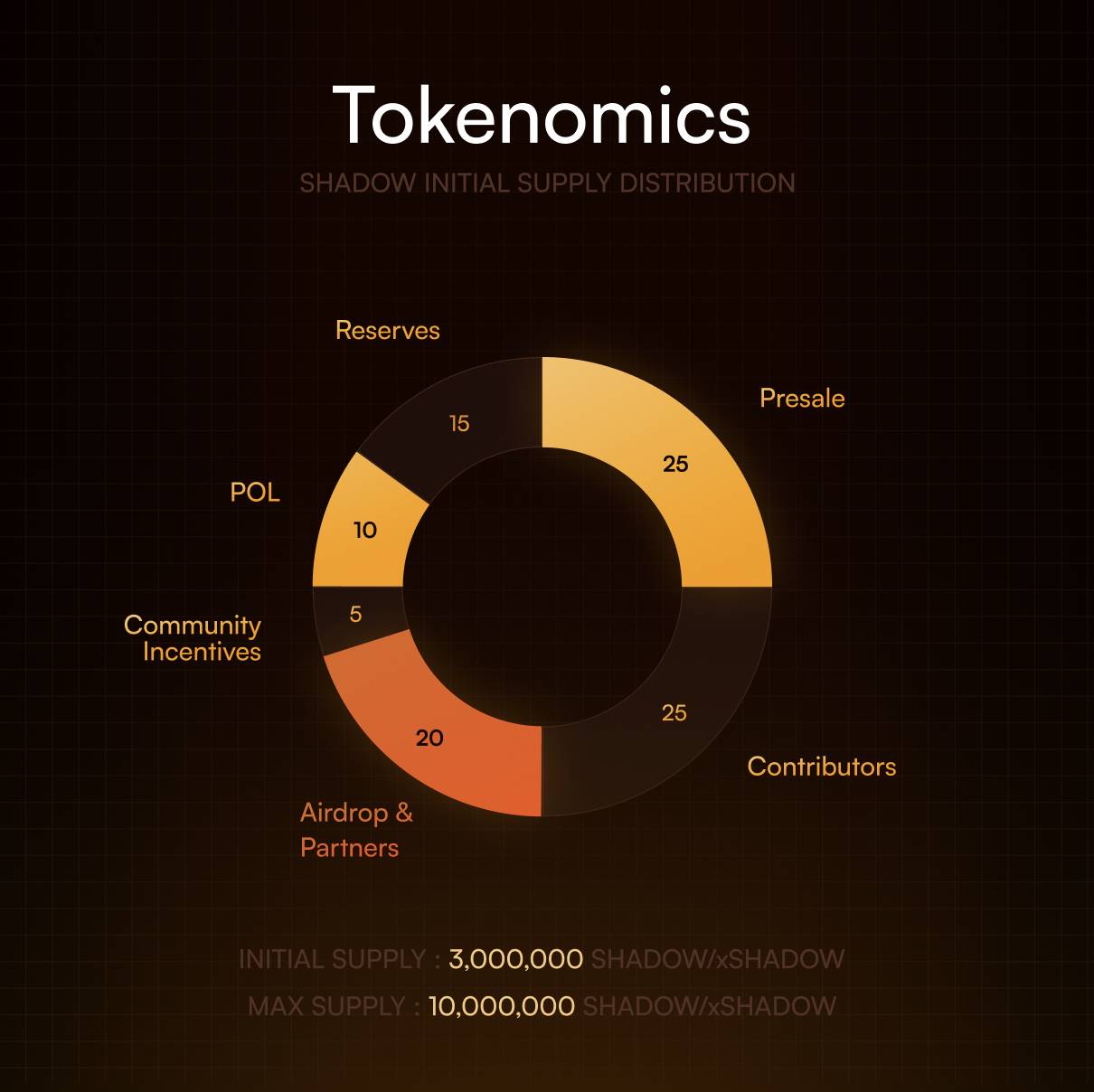
$xSHADOW is the core of ecosystem governance:
Users can stake $SHADOW to obtain $xSHADOW.
Shadow allows users to exit $xSHADOW staking at any time, but early exit requires a penalty, which is 100% redistributed to holders via the PVP Rebase mechanism, thus protecting long-term holders.
xSHADOW holders vote weekly via epochs to decide the token rewards allocated to different Shadow liquidity pools. Project teams can also offer extra incentives to attract xSHADOW holders’ votes.
Under the Sonic ecosystem’s FeeM model, the 90% fee rebate received by Shadow is fully distributed to $xShadow and $x33 holders.
$x33 is the core vehicle for ecosystem liquidity release and compounding creation:
Since $xSHADOW is only for governance and cannot be freely traded, users can mint $x33 at a 1:1 ratio using $xSHADOW.
As the liquid version of $xSHADOW, $x33 can be freely traded as an asset and used in other lending or derivative DeFi protocols, allowing users to release liquidity while retaining governance rights and returns, thus creating greater value.
Meanwhile, $x33 features auto-compounding. $xSHADOW grows continuously through $x33, pushing up the exchange rate between $xSHADOW and $x33 and attracting arbitrage bots to participate.
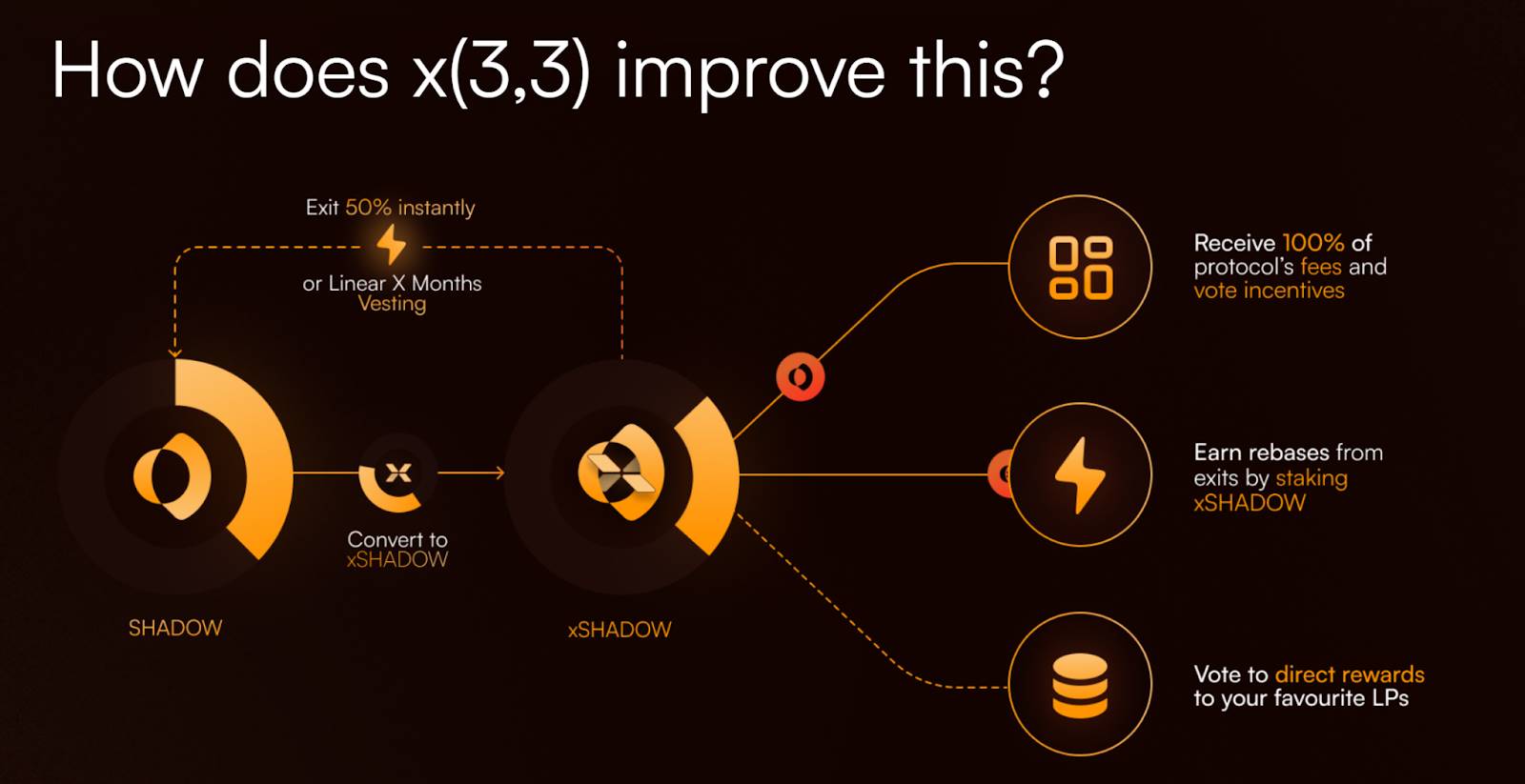
For more specific introductions and technical details about the Shadow x(3,3) model, interested readers can refer to our previously published in-depth article: " Sonic Ecosystem Ranks First in Both Trading Volume and Income: Is Shadow, with x(3,3), Leading the Ultimate Evolution of DeFi Liquidity Incentives? "
In this way, Shadow Exchange has forged a precise positive cycle through the x(3,3) model:
Ecosystem incentives attract user participation → more active trading generates higher protocol income → higher protocol income brings greater ecosystem incentives → greater ecosystem incentives attract broader user participation.
In this cycle, traders benefit from low-fee, high-frequency execution, LPs receive dynamic protection and amplified returns, and holders lock in long-term appreciation through governance and Rebase. By maximizing the balance of interests among these three roles, Shadow is truly empowered with the underlying momentum for long-term sustainable development.
Data Performance: The Absolute DeFi Leader of the Sonic Ecosystem
Currently, Shadow Exchange supports a wide range of liquidity pools, including core stablecoin pairs, high-volatility meme coin pools, and cross-ecosystem assets, covering scenarios from traditional DeFi to emerging narratives.
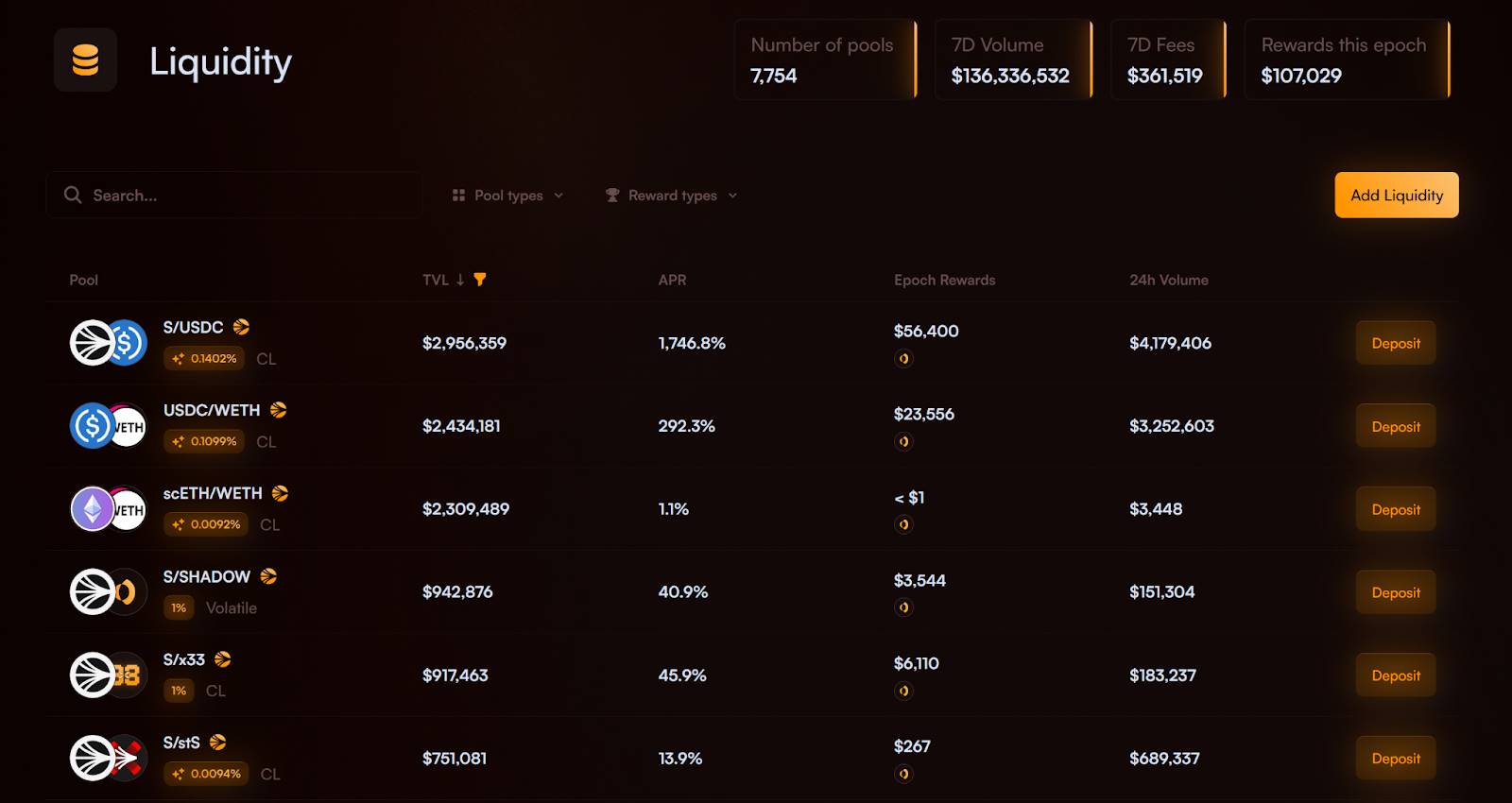
Beyond the product, data dimensions further highlight Shadow’s core position as the DeFi leader in the Sonic ecosystem.
According to DeFi Llama data, Shadow Exchange’s cumulative DEX trading volume has exceeded $12.517 billion. On February 21, 2025, Shadow’s 24-hour trading volume reached $252,856,099, setting a new historical high and surpassing Hyperliquid.
On the user side, according to Messari reports, its daily active users (DAU) reached 73,071, far surpassing most protocols within Sonic and demonstrating strong community stickiness.
Protocol income and reward distribution are also noteworthy. According to official data, Shadow has so far accumulated over $38 million in fee income and over $25 million in platform income.
During the week of the 10.11 crash, Shadow’s dynamic fees better protected LPs from massive impermanent loss while prioritizing the highest possible fee earnings, generating $172,243 in fees and excelling in its goal of "maximizing LP protection + superior fee capture" during the crash.
According to official data, on October 16, 2025, Shadow distributed over $353,737 in rewards, with over $194,000 in $Shadow emissions during the 38th epoch.
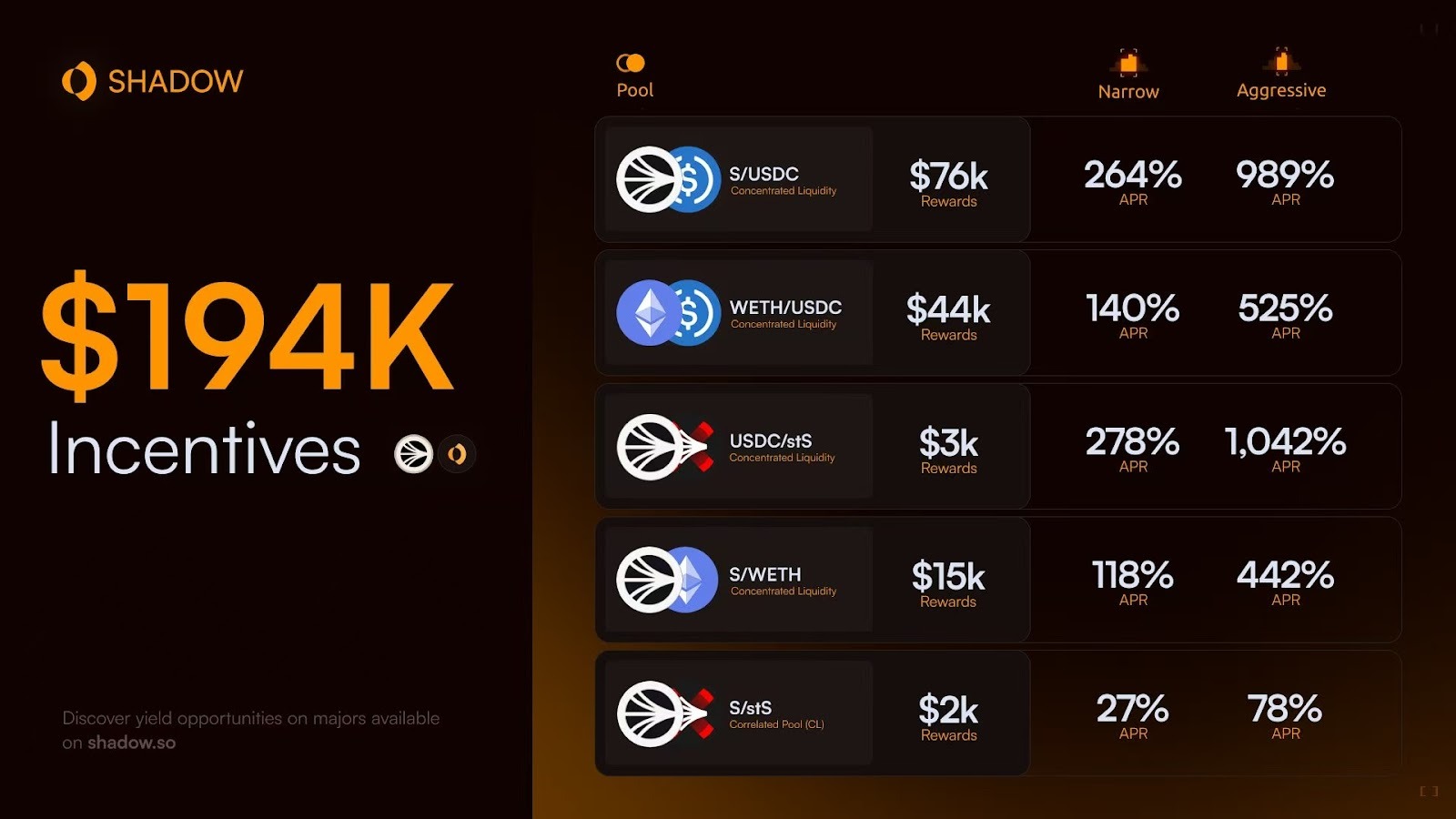
In terms of penetration and coverage within the Sonic ecosystem, Shadow Exchange boasts even more impressive data:
In trading volume, according to Messari reports, Shadow accounted for 53.0% of Sonic ecosystem trading volume in Q2 2025, 47.3% since launch, and up to 69% at its peak.
In terms of income, Shadow is the top-earning protocol in the Sonic ecosystem, contributing about 86% of Sonic’s income at its peak.
For users, 80% of Sonic’s active users use Shadow.
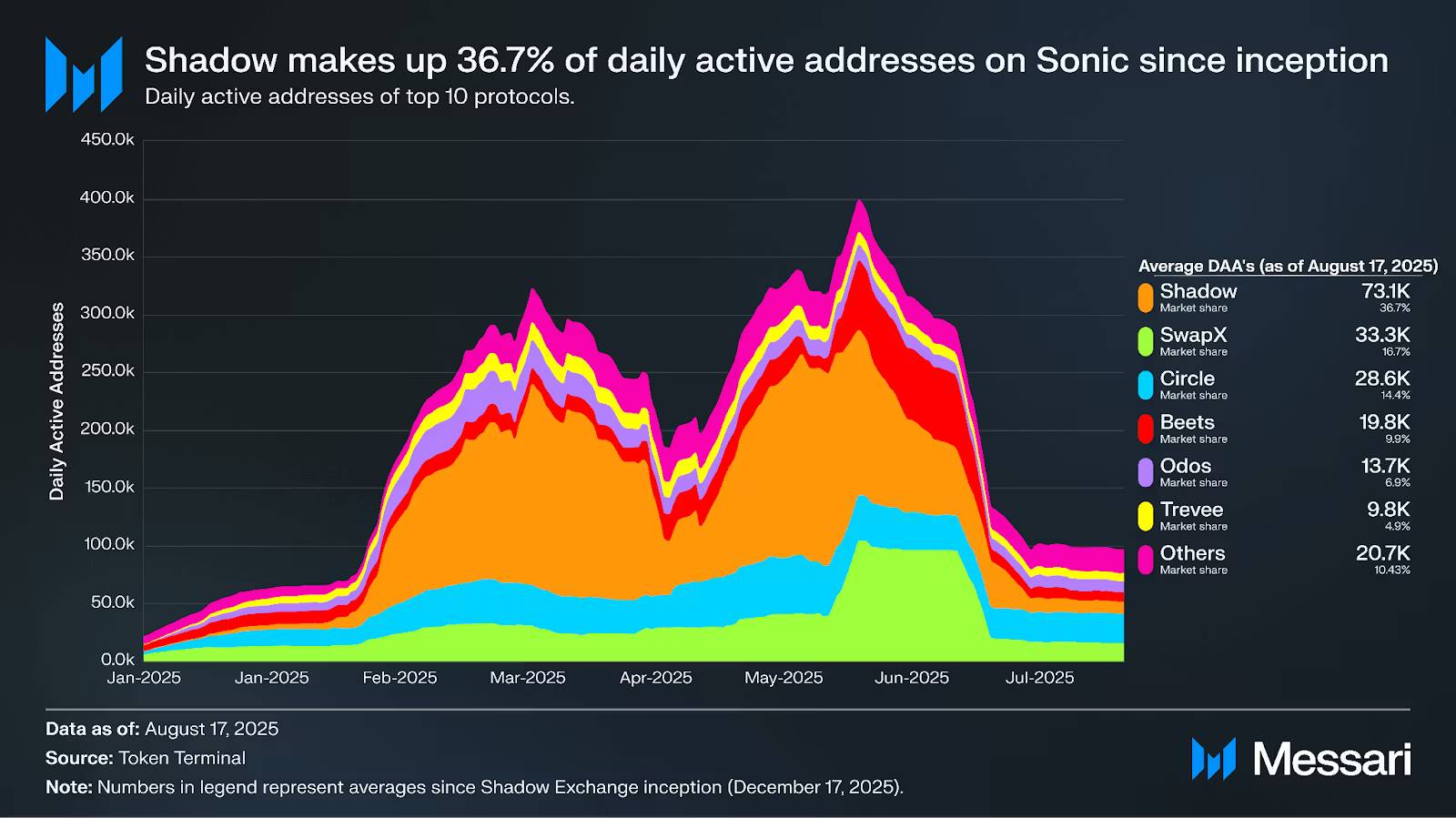
Market Focus on DEX: Multi-dimensional Measures Accumulate Shadow’s Future Growth Momentum
As the DeFi leader of the Sonic ecosystem, Shadow Exchange has built a self-reinforcing liquidity incentive flywheel through the innovative x(3,3) model. From a cumulative $12.5 billion in trading volume, to capturing 53% of the Sonic ecosystem’s market share, and covering 80% of ecosystem users, Shadow has already proven its status as the key liquidity hub of Sonic.
With the continued rise in on-chain trading activity and multiple market drivers, Shadow’s future growth potential is accelerating.
On one hand, with the popularity of Hyperliquid and Aster, on-chain trading activity will continue to climb in 2025, and more people are focusing on DEX competition. In the search for the next Hyperliquid or Aster, Shadow, with its unique innovation in reshaping liquidity incentives through the x(3,3) model, may become one of the contenders at the DEX competition table.
On the other hand, the Sonic ecosystem is showing signs of recovery. Although TVL growth is not obvious, data from major platforms show that Sonic’s DEX trading volume and stablecoin address numbers are on the rise, signaling an initial recovery. As the DeFi core of the Sonic ecosystem, Shadow will directly benefit.
It is also worth noting that, due to market volatility, whether in terms of TVL, trading volume, or token price, Shadow is currently at a "low starting point, high rebound potential" stage. For investors optimistic about the Sonic ecosystem and Shadow, this may also mean a larger growth base for Shadow.
In recent months, Shadow has been accumulating strength for another breakout through continuous product refinement and ecosystem building.
On one hand, continuous optimization of incentive measures:
Shadow’s 3 million $S token incentive plan is ongoing. Since Sonic’s second season airdrop will no longer support GEM tokenization, Shadow has pre-released 50% of the expected rewards from the second season airdrop for liquidity incentives and active market-making strategies, further encouraging user participation and ecosystem growth.
At the same time, Shadow has modified its issuance framework, distributing $SHADOW directly to LPs, replacing the previous model of rewarding in xSHADOW, further enhancing capital flexibility.
On the other hand, product features are constantly iterated and improved, and ecosystem partners are continuously enriched and expanded:
On the product optimization front, Shadow has introduced limit orders and time-weighted average price (TWAP) features, further expanding trading capabilities.
In terms of ecosystem building, Shadow is actively promoting cooperation with more projects, launching diversified trading pairs that cover the full spectrum from stablecoins to high-volatility pairs.
Additionally, Shadow has joined the Circle Alliance Directory and integrated both v1 and v2 versions of CCTP, providing users with a seamless cross-chain experience.
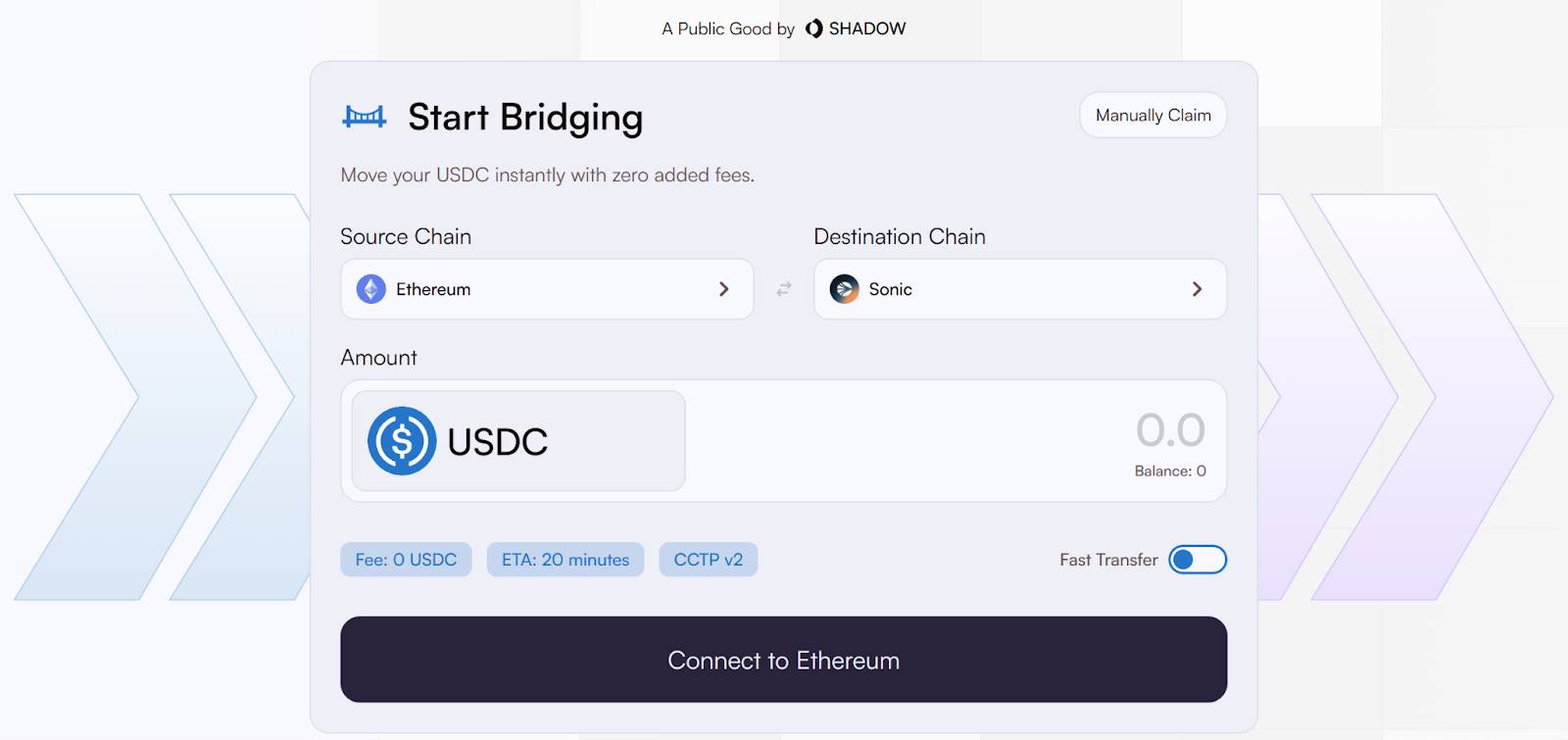
In the near future, a series of key products and features from Shadow will be officially launched:
On one hand, the buyback arbitrage system and delayed reward mechanism will go live, further protecting LPs and strengthening the x(3,3) flywheel effect.
On the other hand, even more disruptive is the lending market based on $x33, positioning $x33 as a collateralizable asset, supporting leveraged lending and derivative strategies, and maximizing the potential of $x33.
Just as the essence of DeFi is to make finance more efficient and democratic, Shadow Exchange is practicing this philosophy through technological innovation and incentive mechanism design, and has withstood the test of a market crash.
As the crown jewel of the Sonic DeFi ecosystem, with continuous improvement of product features and deepening ecosystem construction, the community is witnessing and looking forward to Shadow accumulating strength for its next comeback, once again becoming an important leader in DeFi liquidity innovation.


